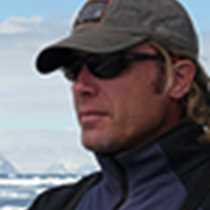Torellneset
In the early morn the National Geographic Explorer was making slow progress towards the fluvial spit of land known as Torellneset on the southwest corner of the island of Nordauslandet, the coldest and most remote of islands in the Svalbard Archipelago. The island is coiffed by two great caps of ice, Vestfonna in the north and Austfonna in the south, third largest of the world’s icecaps after the Greenland and Antarctic icecaps. The majority of ice-free areas are in the far north of the island. However, two prominent spits of ice-free land lie in the island’s southern reaches, Torellneset on the island’s southwest corner, and Vibebukta, a few clicks to the east of Torellneset. Both regions are raised beach terraces of unconsolidated pebbles and cobbles, the result of isostatic rebound from retreating glaciers, but of the two, Torellneset is generally the seasonal home to hauled-out walruses. Close viewing of them was our day’s early goal.
The morning was cooled by bitter easterly winds blowing across the great icy plain of Austfonna. The monochromatic gray sky was trimmed in shades of pewter and burnished silver, the sun, no more than a diffuse source of light and heat high beyond the stretched gauze of thin stratus clouds. As we boarded Zodiacs, the currents of air hit a stride, steady and swift, powered by the chill of high Arctic reaches. Such winds served notice—this was no place for the cavalier or the ill-prepared. We were no longer within the warm, swaddling arms of Svalbard’s western climes; we were on the edge, in an otherworldly realm.
Amid the brisk conditions, we fanned out on foot into paths of discovery. Upon cursory viewing, Torellneset appears a desert within the greater polar desert that is Svalbard, barren of life. More detailed inspection reveals something surprising. Life clings to the margins. In the shallow swails, narrow stream gullies, and on the leeward sides of animal bones average rocks, plants grew. Small clumps of Purple and Tufted Saxifrage revealed themselves as tiny islands of verdant growth in a sea of barren stone. Mosses thrived in the depressions where precious water collected. And all around, lichens exploited terrain unsuitable to virtually any other living organism.
The plant life, though notable, was not our morning’s objective. It was the Atlantic Walruses, huddled together in a cluster of thigmotactic bliss that garnered our attention. Walruses are notoriously skittish, easily disturbed. Quiet and discreet, we approached in carefully controlled groups of sizes not to alarm the sensitive beasts. We were all rewarded. The animals were, for the most part, reposing, but would occasionally rear up the forefronts of their bodies and bare their tusks and briefly vocalize before settling back down. A few small groups even cruised with purpose through the shallows just off shore, their attention directed towards the haul out. Yet, they possessed enough awareness to periodically focus their collective mind towards the oddly-clad strangers on shore. The recipe bordered on all encompassing—on land and in the water, semi-distant and up close. In a short stretch of time we were witness to multiple facets of behavior, nothing short of a privilege.
During lunch our vessel made way due south towards Freemansundet, the great strait that separates the islands of Barentsoya and Edgeoya. The region to the east of the strait was, according to the latest satellite imagery, one of the last strongholds of this year’s fast ice (pack ice held fast to the land). Consequently, it was one of the more likely areas to spot polar bears patrolling the ice for seals. On final approach to the ice edge, the telltale signs of creamy blobs in motion let us know that our suppositions would pan out. A smattering of seals, a few walruses, and a total of three bears were spotted. The last bear encounter was special indeed. Distant and to the west of our position initially, it slowly ambled in a zigzag course at an acute angle to our position. Our captain took the initiative and began to bridge the gap. Perhaps a half-mile from the bear, he slowed the vessel and brought it to rest in a dense swath of ice. The bear did the rest. Over the next half-hour it strode a straight line towards us, periodically halting to sniff and taste the air. A veritable cocktail of odors radiated from our ship, irresistible to the bear’s senses and curiosity. Before long, it stood right under our bow. No need for telephoto lenses. It was time to break out the wide-angle glass. Frames and camera cards were filled before the bear, its inquisitiveness sated tough perhaps its appetite not, moved off to the east in search of fairer game.




